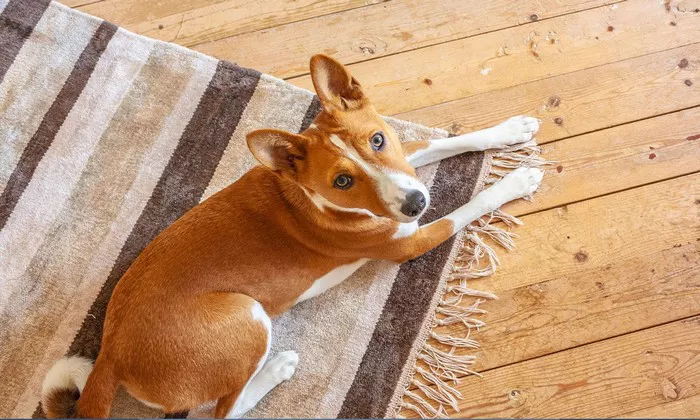Training a Basenji can be both a rewarding and challenging experience. Known for their intelligence, energy, and independence, Basenjis require a unique approach to training that respects their natural instincts while promoting positive behaviors. As a veterinarian with extensive knowledge about dogs, this article will guide you through the best practices for training your Basenji, ensuring a harmonious relationship with your furry friend.
Understanding the Basenji Breed
Breed Characteristics
Basenjis are a small to medium-sized breed originating from Central Africa. They are known for their distinct features, including a wrinkled forehead, curled tail, and an absence of barking. Instead, they produce unique vocalizations often referred to as “baroos.” Basenjis are highly energetic, intelligent, and possess a strong prey drive, making them both fascinating and sometimes challenging to train.
Temperament and Behavior
Independent Nature:
Basenjis are known for their independence and self-reliance.
They often prefer to explore and make decisions on their own, which can make traditional training methods less effective.
Curiosity and Intelligence:
Their intelligence and curiosity make them quick learners, but also prone to boredom if not mentally stimulated.
They enjoy problem-solving and interactive activities.
Energetic and Agile:
Basenjis have high energy levels and require regular physical exercise.
They excel in activities that involve agility and running.
Training Techniques for Basenjis
Positive Reinforcement
Reward-Based Training:
Use treats, praise, and toys as rewards for desired behaviors.
Positive reinforcement encourages your Basenji to repeat good behavior.
Consistency:
Be consistent with commands and rewards.
Inconsistent training can confuse your Basenji and slow down progress.
Short Training Sessions:
Keep training sessions short and engaging, around 10-15 minutes.
Basenjis can lose interest quickly, so brief sessions help maintain focus.
Establishing Leadership
Clear Boundaries:
Set clear boundaries and rules from the beginning.
Consistency in enforcing rules helps establish your role as the leader.
Confidence and Calmness:
Maintain a calm and confident demeanor during training.
Basenjis respond well to confident leadership and clear guidance.
Routine and Structure:
Create a daily routine that includes regular training sessions.
Structure helps your Basenji understand expectations and feel secure.
Socialization
Early Socialization:
Introduce your Basenji to various environments, people, and other animals from a young age.
Early socialization helps prevent fearfulness and aggression.
Positive Experiences:
Ensure that socialization experiences are positive and rewarding.
Gradually expose your Basenji to new situations to build confidence.
Controlled Interactions:
Monitor interactions with other dogs to prevent negative experiences.
Use controlled settings for initial introductions to new dogs and environments.
Obedience Training
Basic Commands:
Start with basic commands such as “sit,” “stay,” “come,” and “leave it.”
Use clear, simple commands and reward compliance immediately.
Leash Training:
Train your Basenji to walk on a leash without pulling.
Use treats and praise to encourage walking calmly beside you.
Recall Training:
Practice recall (coming when called) in a safe, enclosed area.
Use high-value treats and enthusiastic praise when your Basenji responds.
Addressing Specific Challenges
House Training:
Establish a consistent routine for bathroom breaks.
Reward your Basenji for going outside and provide plenty of opportunities to do so.
Chewing and Destructive Behavior:
Provide plenty of chew toys and mental stimulation to prevent boredom.
Redirect chewing to appropriate items and reward positive behavior.
Separation Anxiety:
Gradually acclimate your Basenji to being alone.
Start with short periods of separation and increase gradually, ensuring they feel secure.
Advanced Training and Activities
Agility Training:
Enroll your Basenji in agility classes to channel their energy and intelligence.
Agility training provides physical exercise and mental stimulation.
Scent Work:
Utilize your Basenji’s keen sense of smell for scent work activities.
Hide treats or toys and encourage them to find them using their nose.
Interactive Toys and Puzzles:
Provide interactive toys and puzzles to keep your Basenji engaged.
These toys challenge their problem-solving skills and prevent boredom.
Building a Strong Bond with Your Basenji
Trust and Respect
Earn Their Trust:
Build trust through positive interactions and consistent care.
Avoid harsh corrections or punishment, which can damage your relationship.
Respect Their Independence:
Respect your Basenji’s independent nature and provide opportunities for exploration.
Allow them to make choices within safe boundaries.
Communication and Understanding
Learn Their Signals:
Pay attention to your Basenji’s body language and vocalizations.
Understanding their signals helps you respond appropriately to their needs.
Positive Communication:
Use positive communication and gentle guidance during training.
Reinforce desired behaviors with praise and rewards.
Patience and Persistence
Be Patient:
Training a Basenji requires patience and persistence.
Progress may be slow at times, but consistency will yield results.
Celebrate Small Wins:
Celebrate small achievements and progress in training.
Positive reinforcement encourages continued improvement.
See also: How to Train a Beagle to Track Blood
Conclusion
Training a Basenji involves understanding their unique characteristics and using positive reinforcement techniques to encourage desired behaviors. By establishing clear boundaries, providing mental and physical stimulation, and building a strong bond based on trust and respect, you can successfully train your Basenji. Remember that patience and consistency are key, and always approach training with a positive and confident attitude. With the right approach, you can enjoy a well-behaved and happy Basenji that thrives in your care.


